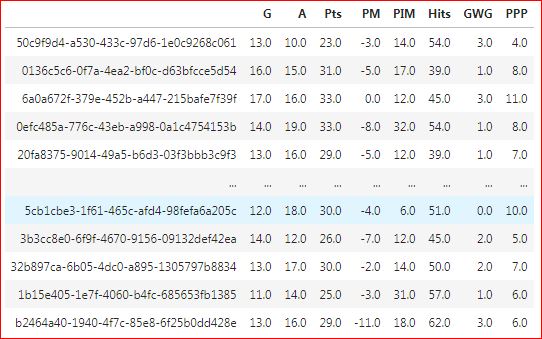i'm wondering if anyone can provide some input on improving the speed and calculations of a pandas result.
What i am trying to obtain is a summation of IDs in one table (player table) based on each row of a second table (UUID). Functionally each row needs to sum the total of the players table rows that are contained in its Active row and assign the UUID as the index to that row.
My initial thought was to loop row by row and calculate out my results but that has produced quite a slow result, and i suspect is not the optimal way that this could be accomplished. In the version below my estimate total time for the full dataset would be around 66 minutes. Running on a subsample of 10,000 takes around 20 seconds.
Would anyone have a better solution to calculating these results?
Thanks in advance!
UUID Table
This is a subset of the whole table
shape = (2060590, 2)
Player ID Table
This is a subset of the whole table
shape = (39,8)
Final Table
Code
# executes in ~20 seconds
df = None
for ix, i in enumerate(uuid_df[["UUID", "Active"]].sample(10000).itertuples(index=False)):
# Get UUID for row
_uuid = i[0]
# Get list of "Active items" (these are the ones that will be summed)
_active = i[1]
# Create new frame by selecting everything from points table where the ID is in the Active List.
# Sum selected values, convert to a dataframe with UUID as index and tranpose
_dff = points_table_df.loc[points_table_df.index.isin(_active)].sum().to_frame(_uuid).T
# Check if first dataframe, if not concat to existing one
if df is None:
df = _dff
else:
df = pd.concat([df, _dff])



